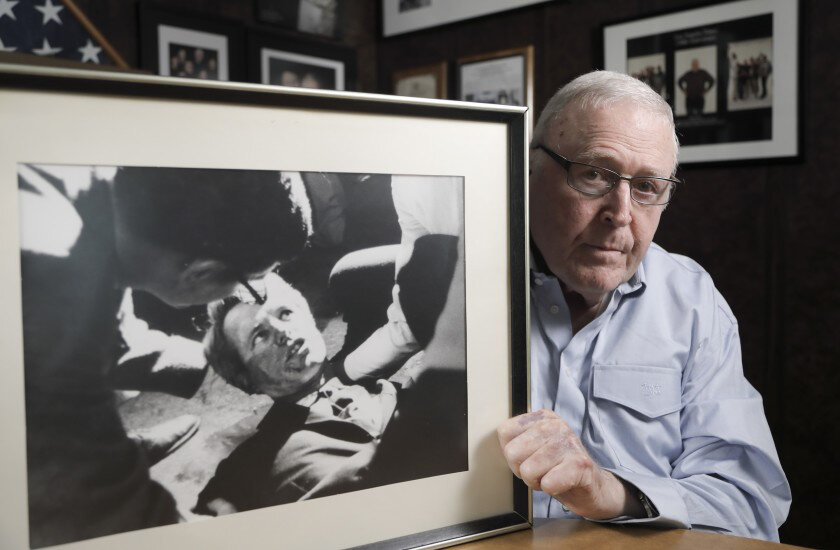Boris Yaro
Khai Le
Myung J. Chun / Los Angeles Times)
By Doug Smith, Senior Writer, Los Angeles Times
As Robert F. Kennedy was leaving the Ambassador Hotel on June 5, 1968, following his victory in that year’s California Democratic Presidential primary, a part-time Los Angeles Times photographer, working on his own time in hopes of catching a shot for his wall, followed.
“The idea went further than I had expected,” Boris Yarowould write more than 40 years later in a reminiscence of the night he became one of the world’s celebrated photographers.
In the pandemonium of the hotel’s pantry following Kennedy’s shooting by Sirhan B. Sirhan, as the crowd parted from the fallen candidate, Yaro snapped the enduring black-and-white image of a distraught busboy trying to console a mortally wounded hero.
Yaro, who shot news photos for The Times for more than 40 years and along the way tutored the actor who played the news photographer on the TV series “Lou Grant,” died Wednesday at his home in Northridge of natural causes. He was 81.
Although Yaro’s career became defined by the Kennedy photo, he was known to colleagues as a hard-driving but dapper news hound.
Always going to work in a blazer and tie, Yaro presented an amusing contrast to the slovenly, rumpled photographer known as Animal on “Lou Grant.” In preparing for that role, actor Daryl Anderson tutored under Yaro, learning how to use a camera and going on assignments to absorb the daily rhythm of the photojournalist.
“It struck me as comical that here was this character he got hanging around with Boris,” said Times photographer Al Seib.
In a 1996 book on the making of “Lou Grant,” author Douglass K. Daniel quoted Yaro as saying, “You can’t walk into a newsroom dressed as a damn bum.”
Beneath Yaro’s sharp appearance was an intense commitment to his craft.
“It was like meeting a rock star,” said Rick Meyer, another longtime Times photographer, of his first meeting with Yaro in 1973, when Meyer was fresh out of journalism school. “His company car sprouted numerous antennas for police radios. Boris would respond to news stories all hours of the day and night.”
“He knew everybody: every fireman, every policeman,” said colleague Joel Lugavere. “They all knew him on a first-name basis.”
Yaro’s children, Michael Yaro and Nicole Good, said that dedication was part of their lives too.
“We all lived with that,” Good said. “He had scanners on his nightstand. He never left home without some form of connected communication. He always had one, maybe two maybe three cameras with him, film in every single pocket.”
According to his children, Yaro joined The Times in the mid-1960s as a part-time photographer in the paper’s San Gabriel Valley office.
In his 2010 recollection of the night of the Kennedy assassination, Yaro said he did not take photos during the shooting.
“It was dark, and I think I was afraid,” he wrote.
When he saw Kennedy sinking to the floor, he realized, “I had better make pictures.”
Then a woman grabbed his sleeve and pleaded with him to stop.
“My response was, ‘Dammit, lady, this is history,’ ” Yarowrote. “I pulled my coat sleeve loose from her grasp but lost some visual space because people began crowding around the fallen Kennedy.”
The photo, which is part of the permanent collections of the Getty Museum in Los Angeles and Museum of Modern Art in New York, did not win the Pulizer Prize, which went that year to an equally enduring shot of the execution of a Viet Cong prisoner in Saigon.
Pulitzer Prize-winning former Times photographer Don Bartletti said he thought two Pulizers should have been given that year.
“When you look at Boris’ picture of Kennedy from head to foot, with the kitchen worker leaning over him, that is a completely perfect composition with all the necessary elements,” Bartletti said. “His picture is and will remain fantastic.”
Besides his two children, Yaro is survived by his wife, Jill, and a brother.
